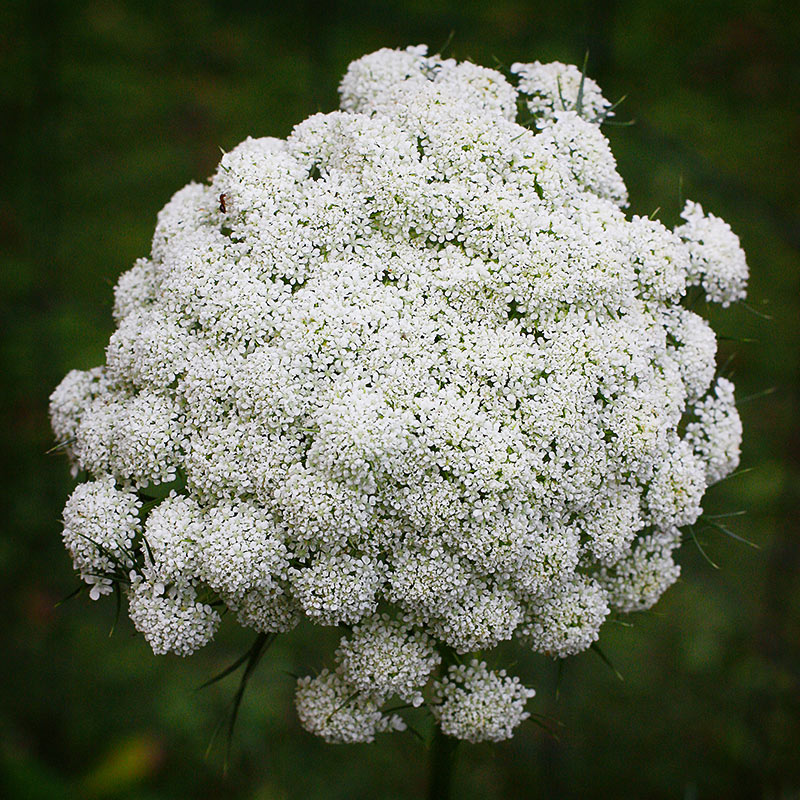
Carrots are amazing plants. They’re actually biennials, which means they have a growth cycle that’s spread over two years.
The first year, grown from seed, the plant grows a taproot — the colorful carrot we love so well — along with lush, edible green foliage. The second year, if left in the ground over a cold winter, the root sends up a stalk in the summer that produces beautiful white flowers and later, seeds (or, more specifically, schizocarps — but that’s another story).
The first flower from this stalk is called the King Umbel, because it’s always the largest. This one, above, was 6″ across.
Ain’t he handsome?

Here’s the King from the back — the fascinating structure of the flower is readily visible from this angle.
(Fun Fact: Carrots and Queen Anne’s Lace are relatives — Queen Anne’s Lace is actually a wild carrot — with similar-looking flower heads, made up of hundreds of tiny blooms, called umbellets. You can tell the two apart because there is almost always a single purple bloom in the very center of a Queen Anne’s Lace flower.)
Learn more about second-year carrot plants.